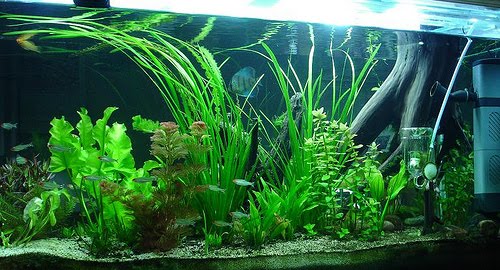Basic Types of Aquarium Lighting

Not counting regular incandescent lights, which are rarely used nowadays, there are two basic types of aquarium lighting for photosynthetic organisms: fluorescent and high-discharge filament lights.
Fluorescent is always the preferred choice when it comes to a simple home aquarium setup, it means if you will not be keeping live plants, macroalgae, or photosynthetic invertebrates, the only lighting equipment you need on your tank is what you’d like in order to view your fish, because it does not emit as much heat as metal halide and high-end florescent tube is more than enough to produce full-spectrum illumination to enhance the health and improve skin coloration of the fish.
Fluorescent tubes are usually used for those aquariums that contain only fish without freshwater aquarium plants or saltwater reefs, because the tank that looks perfectly illuminated to us can be completely unacceptable to plants, and even what would make for a well-lit planted tank would not be bright enough for most of the photosynthetic marine invertebrates found in reef aquaria.
However, depending on requirements, reef tanks and live coral will do better only with metal halide system that produces high intensity lighting. Somehow for the best result, mixing fluorescent tubes with metal halide is always the preferred choice because it will provide full benefit of both systems and experienced aquarium hobbyist are known to prefer such setup.

Proper lighting is necessary to replicate the natural conditions found in natural habitats. Aquarium fish needs at least 12-14 hours of light exposure and thus the best setup should have a timer that automatically turns on and off the light for specific period of time daily. Aquarium light tubes should be contained in a light hood and general maintenance will require the tubes to be replaced at least once every 9 months to ensure best performance.
Most HD Lighting or high-discharge aquarium lights are metal halide. These come in both screw-in and double-ended formats and a great variety of wattages and spectra, measured in Kelvins. Because of the intense heat generated by these lamps, the fixtures often include one or more fans, and they are generally hung above the tank to reduce heat transfer to the water. Metal halides are powerful enough to punch through deep water to provide sufficient illumination for photosynthetic reef invertebrates.









